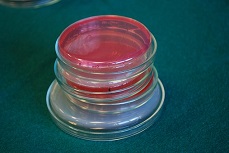What Tests Should I Do If I Have Pelvic Inflammatory Disease?
Pelvic inflammatory disease is stubborn and hard to cure, which also brings a lot of pain to patients, so early detection and early treatment are recommended. So how to test for it? What examinations can we take?
1. The direct smear of secretion
The samples can be a vagina, cervical tube secretion, urethra secretion, or abdominal fluid (obtained through the posterior vault, abdominal wall, or laparoscopy), which can be a directly thin-layer smear, stained with methylene blue or gram after it is dried.

Gonorrhea infection occurs when gram-negative diplococcus is seen in polymorphonuclear leukocytes. Because the detection rate of cervical gonorrhea is only 67%, negative smear can not exclude the existence of gonorrhea, and positive smear is very specific.
In the microscopic examination of Chlamydia trachomatis, the monoclonal antibody dye of fluorescein can be used. The fluorescent spot with a star-like twinkle observed under the fluorescence microscope is positive.
2. Pathogen culture
The source of the sample is the same as the above. It should be inoculated on the medium immediately or within the 30s, cultured in 35 ℃ incubators for 48h, and identified by glycolysis. The new relatively rapid method of chlamydia enzyme detection can replace the traditional method of Chlamydia detection, and can also be used to detect Chlamydia trachomatis antigen in mammalian cell culture.
This method is enzyme-linked immunoassay. The average sensitivity was 89.5%, with 98.4% specificity. Other aerobic and anaerobic strains can also be obtained by bacteriological culture, which can be used as the basis for antibiotic selection.

3. Ultrasonic inspection
It is mainly B-ultrasound or gray-scale ultrasound scanning and photographing, which has 85% accuracy for identifying the masses or abscesses formed by the adhesion of fallopian tube, ovary, and intestines. However, it is difficult to show the characteristics of mild or moderate pelvic inflammatory disease in B-ultrasound images.
4. Posterior fornix puncture
Posterior fornix puncture is one of the most common and valuable diagnostic methods for the acute gynecological abdomen. Through puncture, the content of abdominal cavity or utero rectal fossa obtained, such as normal peritoneal fluid, blood (fresh, old, coagulated blood silk, etc.), purulent secretion of pus, can make the diagnosis further clear, and the microscopic examination and culture of puncture objects are more necessary.
5. Laparoscopy
If it is not diffuse peritonitis, the patient's general condition is not bad. A laparoscopic examination can be performed in patients with pelvic inflammatory disease or suspected pelvic inflammatory disease and another acute abdomen. A laparoscopic examination can not only make a clear diagnosis and differential diagnosis but also preliminarily determine the degree of severity.

6. Examination of male partners
Direct smear staining or culture of diplococcus gonorrhea can be performed on the urethral secretion of the male companion. If it is found positive, it is a piece of strong evidence, especially in the asymptomatic or mild cases, or more white blood cells can be found. If the male partners of all PID patients are treated, whether they have symptoms of urethritis or not, it is obviously significant to reduce recurrence.
For the treatment of pelvic inflammatory disease, modern medicine usually adopts broad-spectrum antibiotics and anti anaerobic drugs. This kind of medicine can not only play a good role in sterilization and anti-inflammation but also can quickly alleviate the symptoms of patients.
However, patients need to pay attention to the side effects such as drug resistance and drug intolerance, so they can not be taken it for a long time, so as to avoid the imbalance of bacteria in the body, which may lead to other diseases or aggravate the disease.

Moreover, chronic pelvic inflammatory disease is easy to cause adhesion around organs due to long-term inflammatory stimulation, and anti-inflammatory drugs are not easy to enter. Therefore, at this time, the efficacy of antibiotics is not good, but traditional Chinese medicine treatment can highlight its advantages.
At present, most of the patients with the chronic pelvic inflammatory disease are mainly treated with traditional Chinese medicine. Fuyan pill, which can clear away heat and detoxify, promote blood circulation and remove stasis, can achieve the very good effects or achieve the goal of cure without side effects, and it can be a good choice for you.
Recommended readings:
What Foods Are Good for Patients with Pelvic inflammatory Disease?
previous pageIs Pelvic Inflammatory Disease Associated With Your Male Partner?
next page
You may also be interested in
- Severe Endometriosis Treatment: Chronic Pelvic Pain Relief and Infertility Solutions
- Managing Adenomyosis: Easing Pelvic Pain and Heavy Menstrual Bleeding with Natural Approaches
- Daily Care Tips for Pelvic Inflammatory Disease Caused by Ureaplasma Urealyticum
- Is Fallopian Tube Blockage Causing Your Lower Abdominal Pain?
- Don't Let Pelvic Pain Trouble You! Traditional Chinese Medicine and Dietary Therapy to the Rescue
Testimonials
- Adenomyosis with Ureaplasma Urealyticum Cured by Fuyan Pill
- Tubal blockage with hydrosalpinx can be cured by TCM shortly
- Fuyan Pill Helps A woman with Adenomyosis Get Pregnant
- A Woman with Hydrosalpinx Is Cured with Fuyan pill
- Pelvic Inflammatory Disease Testimonials
- Irregular Vaginal Bleeding and Endometrial Thickening Cured by Fuyan Pill
- Pruritus Vulvae and Frequent Urination: Mycoplasma Infection Cured after 2 Courses



